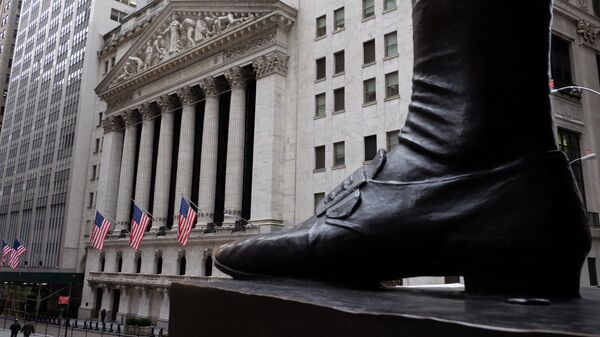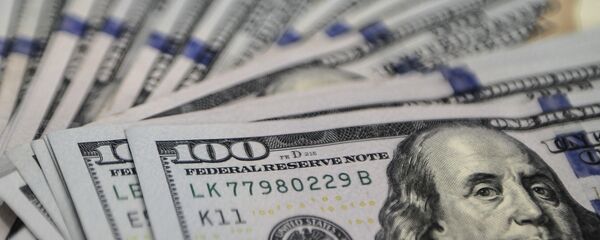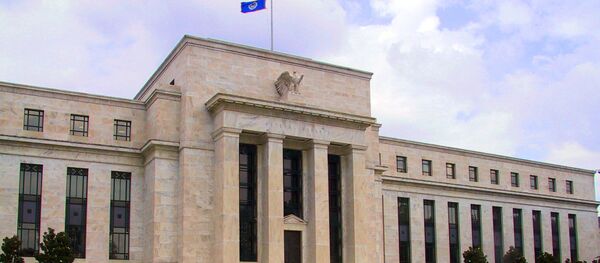The US Federal Reserve is widely anticipated to hike base borrowing rates during the 16-17 December Federal Open Market Committee (FOMC) meeting, but even if the regulator remains in the bond market, the steep rout in high-yielding bonds might signal an end of the six-year rally in US securities.
Another potential consequence of the brewing junk bond market crash could be a wave of bankruptcies in the currently hot areas of the US economy like shale oil small caps, metals producers and select financial services.
The higher-yielding bonds in the US are high-risk securities issued by commercial enterprises exposed to various combinations of hazardous factors, yet involved in lucrative operations like oil drilling and mining, capital investment and diverse financial services. Yesterday, Wall Street witnessed massive money withdrawals from the $789 mln-worth Third Avenue Focused Credit Fund after its management failed to pay its investors for months.
Traders are exiting stocks as well ahead of the Fed decision on monetary policy. Nobody is certain of the consequences of a hike in interest rates for their own business, and market participants are dumping risky assets.
Against that background, prices on risky bonds tanked to their six-year lowest with yields skyrocketing, signaling a rising toxicity and a possible collapse of such assets. The iShares iBoxx $ High Yield Corporate Bond exchange-traded fund, a benchmark of the US junk bonds, shed 2% on Friday to its lowest since mid-July 2009.
An unprecedented rout in the post-crisis US bond market might only be a beginning of a greater bonds meltdown. Billionaire investor Carl Icahn said the deeper decline is in line for the US bonds market.
"The meltdown in High Yield is just beginning," Icahn twitted on Friday.
The main reason the junk bond dynamics are so important is that a similar picture preceded shortly before the US financial markets collapse in 2008. After a years-long rally, junk bonds plummeted first, triggering a chain of crashes in both stocks and bonds, invoking grave consequences for the US economy. Besides, the fact the current junk bond rout is happening just before the Fed decision exposes the fragility of the US finance amidst the abundance of cheap commodities and an ever-strengthening dollar.
The Phoenix, AZ-based Freeport-McMoRan Inc., one of the world's biggest copper producers, suffered a massive bonds plunge, which, coupled with copper prices at their multi-year lowest, puts the company on the edge of exhausting its financial resources. Freeport's $2 bln worth of bonds expiring in 2022 dropped 0.025 cents to 0.58 cents per dollar, according to data by the Financial Industry Regulatory Authority. Freeport bonds' yield rocketed up to 13.9%. Another miner, Anglo American Capital Plc has found itself in a similar situation with its $650 mln worth of bonds.
That means default risks are rising for the US companies with high level of debt. Given the large portion of junk bonds have been issued in the mining and energy sectors in the past two-three years, the rout could erase a large portion of US commodity output, potentially driving prices up in the medium-term.
"Right now we are at a critical juncture, and we will be watching it to see which way it goes," Paul Karos of the Minneapolis-based Whitebox Advisors LLC said.
Since 2009, US investors have put tens of billions into high-risk debt, allowing small caps and low-rated companies to expand their businesses. The hot junk bond market greatly contributed to the shale oil boom in North America, and while the returns were positive, the entire market flourished. But after the commodities plunge in prices, the junk bond market has lost 16% its value, to $255 bln in November. More recent developments are even worse.
Although there is no sign of panic in the New York trading, the rout in bonds and equities is anticipated to deepen on Monday as the Fed decision becomes a primary concern.
While there is a considerable liquidity squeeze (the era of cheap money is ending in a few days, so borrowers literally line up for new loans) in the US markets, coupled with disinflationary effects of the cheap oil, volatility is rife. Plummeting junk bonds might turn out to be a trigger for an across-the-board market crash, which is bad news for the Fed — it is they who will be blamed for all the financial turbulence afterwards, even though hardly undeservedly.





